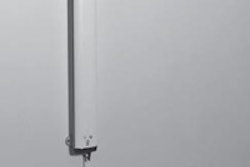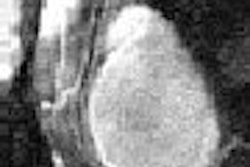Imaging specialists must consider the multiple factors that determine if an MR exam is appropriate for patients with pacemakers and implantable cardiac defibrillators (ICD), according to a new article in the Journal of Cardiovascular Magnetic Resonance.
Dr. Jerold Shinbane and colleagues, from the Keck School of Medicine at the University of Southern California (USC) in Los Angeles, laid out the major imaging-related issues for patients with these devices.
"Varying effects are associated with the specifics of the scanner, including the strength of the static magnetic field, the length of the magnetic bore, and the spatial relation of the device to the scanner," the group wrote. "Consideration of MR ... requires thorough assessment and knowledge of the patient's history, indication for scan, scan type, scan setting, and the type of cardiac device involved" (JCMR, January 2007, Vol. 9:1, pp. 5-13).
Some of the issues that the authors highlighted in their article:
- Magnetic fields may affect bradycardia pacing via the reed switch, which could lead to asynchronous pacing.
- Gradient or time-varying magnetic fields may induce voltage that can affect pacing function.
- The degree of heating may be different for varying systems, even if the same field strength and radiofrequency (RF) energy is used. This difference depends on how the specific absorption rate (SAR) is calculated.
- Extremity and peripheral scanners have not been shown to have a significant effect on ICDs and pacemakers.
- Depending on the MR sequences used, implanted devices may cause artifacts.
The article also summarizes the major considerations for this patient population before an MR exam is done, including pacemaker programming, monitoring during the tests, and post-MR assessment of device function.
MR-friendly devices
The new generation of implanted devices often feature components that render them more MR-safe. These changes include less ferromagnetic materials and improved electromagnetic interference rejection capabilities. In a second JCMR paper, Frank Shellock, Ph.D., and colleagues evaluated the impact of MRI on the current generation pacemakers and ICDs (manufactured after 2000).
Shellock, who is a co-author on the first paper, is from USC and is the founder of the Los Angeles-based Institute for Magnetic Resonance Safety, Education, and Research. His co-investigators are from St. Jude Medical in Sylmar, CA, and Cedars-Sinai Medical Center in Los Angeles.
For this in vitro study, two different types of cardiac pacemakers were used, along with three different ICDs. The researchers used a 1.5-tesla scanner (Magnetom Sonata, Siemens Medical Solutions, Malvern, PA) with a radiofrequency (RF) coil, and imaging was done on a gel-filled phantom with the devices positioned in the thorax.
During the 15- to 16-minute imaging tests, settings were changed to simulate clinical studies. Landmark positions were moved around along with whole-body-averaged specific absorption rates (SARs). MR parameters (pulse sequence, imaging plane, etc.) were also altered to achieve different whole-body averaged SARs.
According to the results, the magnetic field interactions did not create a hazard for the pacemakers and ICDs in this study. There were no changes in how the devices functioned, such as memory corruption, shifts in battery voltage, or change over to the "reset mode" after the MR exam. In addition, there was no evidence of missed pacing pulses or pacing interval extension based on different RF pulse sequences.
In terms of MRI-related heating, the highest temperature changes ranged from 0.2˚ C to 1.0˚ C with the greatest change occurring at the ventricular electrode tip in the thoracic area of the phantom. For ICDs, the highest temperature changes ranged from 0.3˚ C to 3.6˚ C at the right ventricular electrode tip area, the authors explained.
"Given the findings of this study and to improve the risk:benefit aspects of MRI-related heating, a conservative approach may be used by selecting MRI conditions that minimize heating," Shellock's group advised. One option would be to reduce the amount of RF power used during MR procedures, they stated (JCMR, January 2007, Vol. 9:1, pp. 21-31).
The group cautioned that their results are specific to 1.5-tesla scanner and that results may vary with different implanted devices. "Nevertheless, our findings have important implications for patients with these current-generation cardiac devices," they concluded. "If MRI is performed in a patient with one of these cardiac devices, the patient ... should be closely monitored throughout the examination using appropriate equipment, along with having appropriately trained personnel...."
By Shalmali Pal
AuntMinnie.com staff writer
January 30, 2007
Related Reading
Radiologists should discuss cardiac implant disposal with patients, January 1, 2007
High-field MRI of the brain safely acquired in pacemaker patients, December 15, 2006
ICDs more likely to malfunction than pacemakers, April 26, 2006
Copyright © 2007 AuntMinnie.com



.fFmgij6Hin.png?auto=compress%2Cformat&fit=crop&h=100&q=70&w=100)




.fFmgij6Hin.png?auto=compress%2Cformat&fit=crop&h=167&q=70&w=250)











